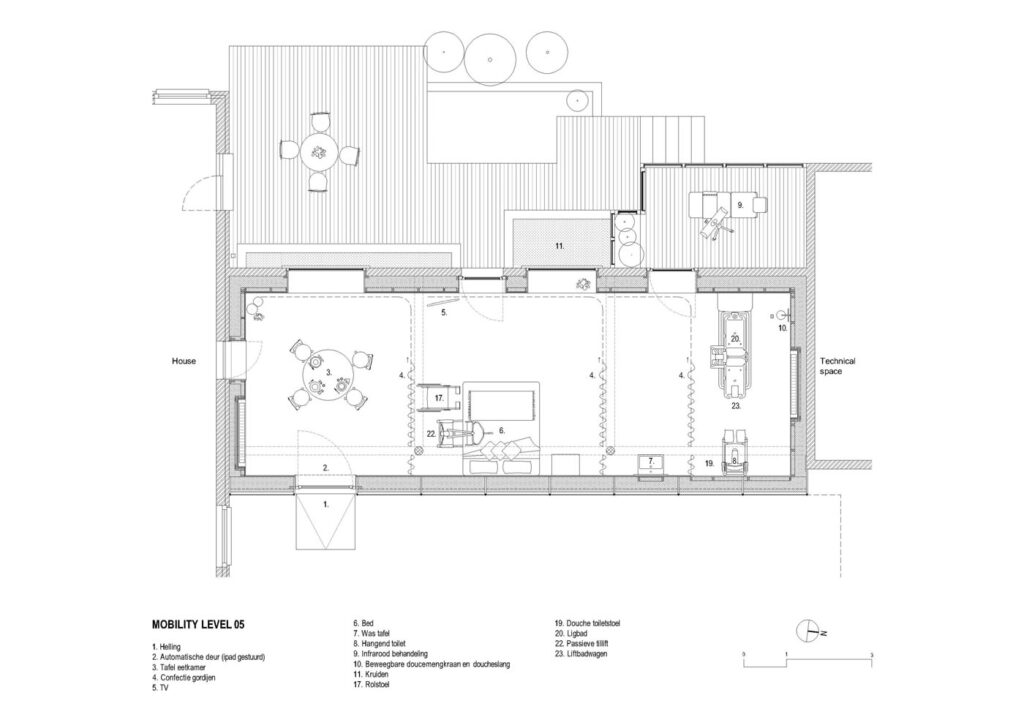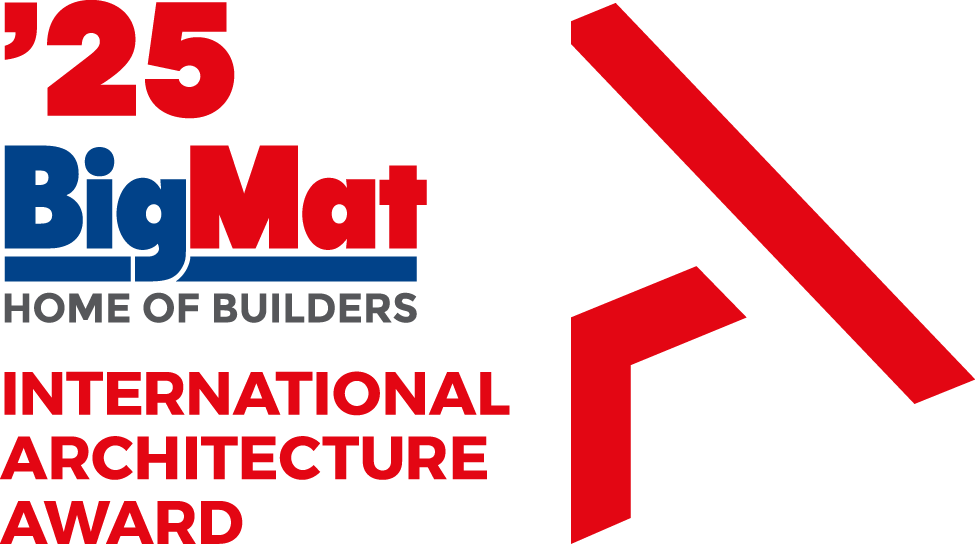This small scale extension of an existing house, BigMat ’19 Belgium National Prize, involves the development of a temporary space suitable for hosting a terminally ill patient, with the focus changed from sickness and death to hope and future.

As Wim Goes writes himself: ‘The project envisages architecture and the building process assisting the ill cess not only physically, but also on a mental level, psychological level. The use of basic materials and simple technology allows more than a hundred people, family and friends of the patient, to be involved in building the Refuge, offering moral support for the patient’s condition, and transforming a situation of suffering into an experience where the value of
community and affectional bonds are rediscovered.
Refugee II in Flanders, Belgium, by Wim Goes Architectuur
BigMat ’19 Belgium National Prize
Architects: Wim Goes Architectuur.
Location: Flanders, Belgium.
Year: 2015.
Gross floor area: 71 m².
Photography: Filip Dujardin, Erica Overmeersch and Wim Goes Architectuur.
Architecture thus brings a message of love, friendship and solidarity… The ease with which the construction elements can be dismantled, and the complete recyclability of the materials, offer a metaphor that reflects the cycle of life.’It rarely happens that the entire life cycle of a building is conceived from the conception. This is the great strength of this project where the designer has taken advantage of the nature of the temporary intervention and the demolition of it to design a process in the first place and afterwards the project itself.
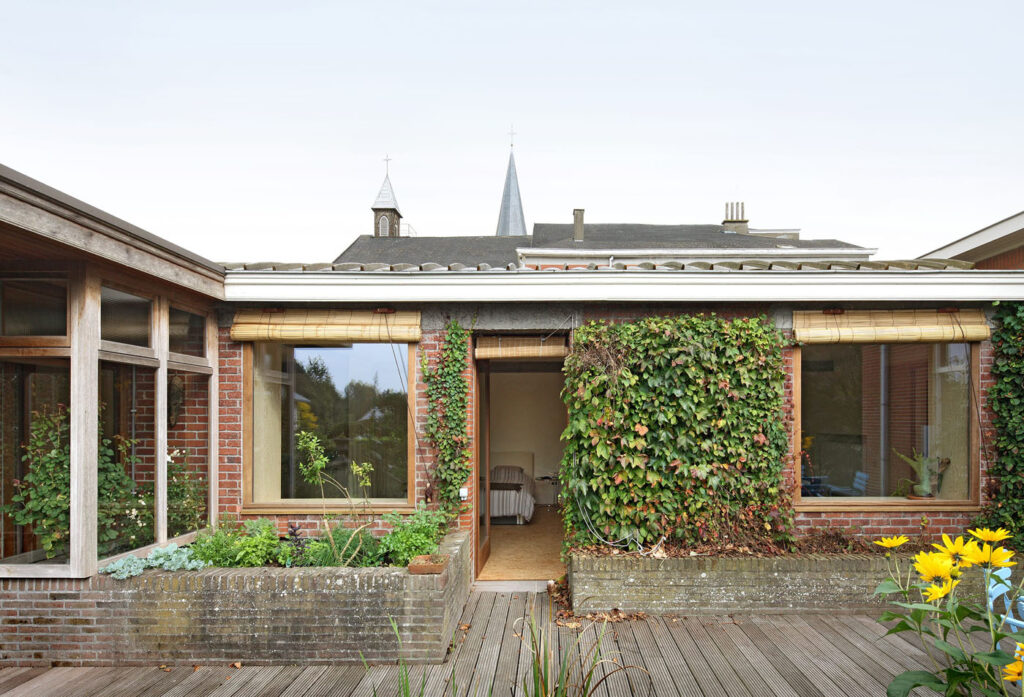

A process that deals with finitude and at the same time creates a new construction by bringing people together. The meaning of this process is much larger than the limited scale of the actual intervention. This specific temporary nature of this construction leads to infinite use of materials that is masterfully threated. The materials used are already part of the fields and forest in which the project was located.


From the ground where we walk on. This way of sustainable, circular building, and its flexibility transcends architecture.
It is the first act of architecture itself. This act gives first of all shelter at the same time as comforting people.
SPRING
We were asked by our client, diagnosed with ALS (Amyotrophic Lateral Sclerosis), to adapt his house with an eye on the future. After meeting with the ergotherapist, we knew we had no time to spare considering the aggressive nature of the condition.

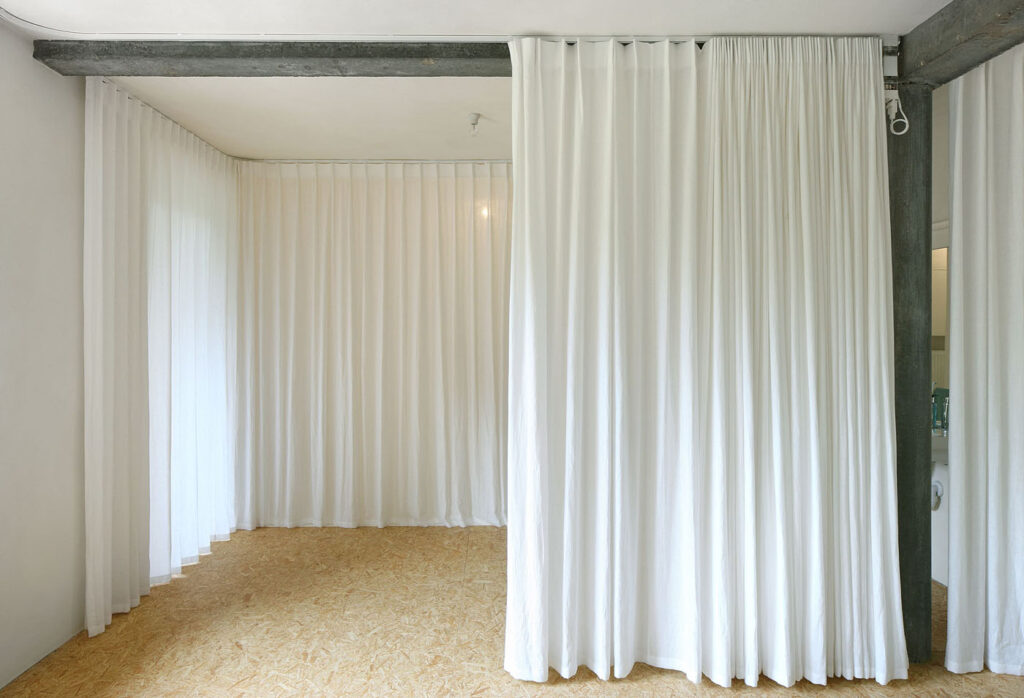
Refuge II is a temporary project. The existing concrete carport was chosen for the project as a result of the limitation in adaptability of the existing house. Of course a barrier-free floor plan was a major concern, but what came to me as being even more important was mental accessibility. There is no hope to heal. There is a need for a universal hope, helping each other, involvement, engagement, friendship beyond limits. How can we make architecture with this? Why not building with friends and family? With materials everybody knows from their childhood. Straw and sand referring to the playground, the smell, the memory…
SUMMER
More than a 100 friends and family contributed in constructing Refuge II. With tutoring from/and more complicated jobs done by professionals like the sustainable heating and ventilation (with heat recuperation) system or the domotics to manage the doors, curtains, lighting,… controllable by the client. While building, coffee, tea, great food, beer and the best wines, were served to celebrate life.
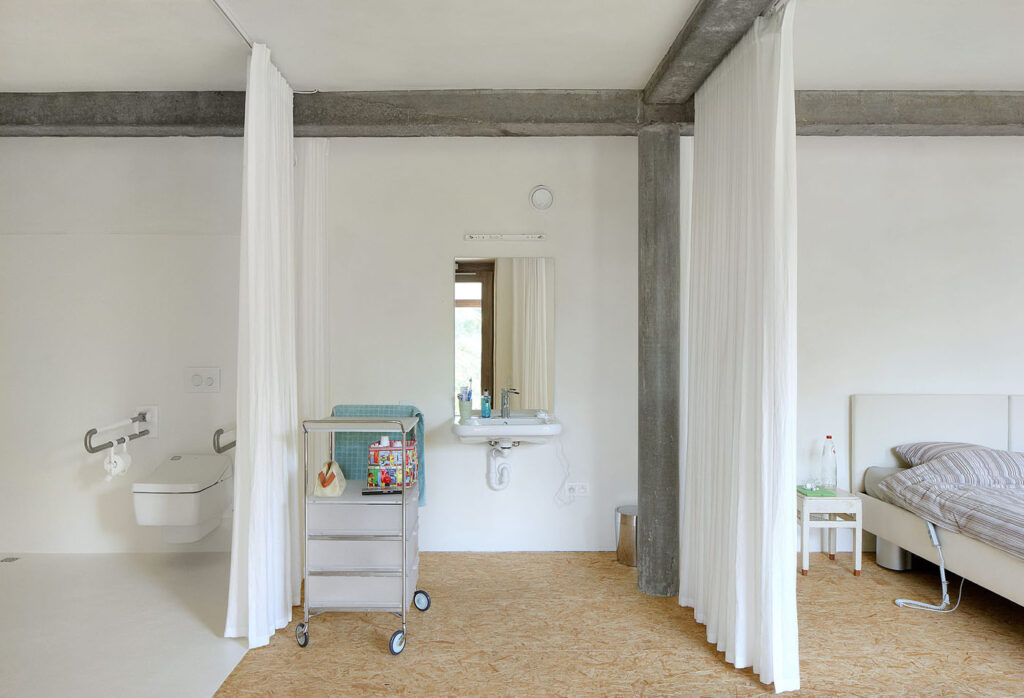

FALL
Everyone being involved recognized him/herself in Refuge II. They were part of it, It created a mental accessibility. The focus changed from sickness and death to hope and future.
A WINTER
Everything will be taken away. 83% of the project (straw and loam) will be spread out over the landscape as fertilisation. Technical equipment (sponsored) will be returned. Glass, metal, wood,… will be recycled. Parallel to this attitude, and above all there is a human investment. The ritual. The cycle of life.

